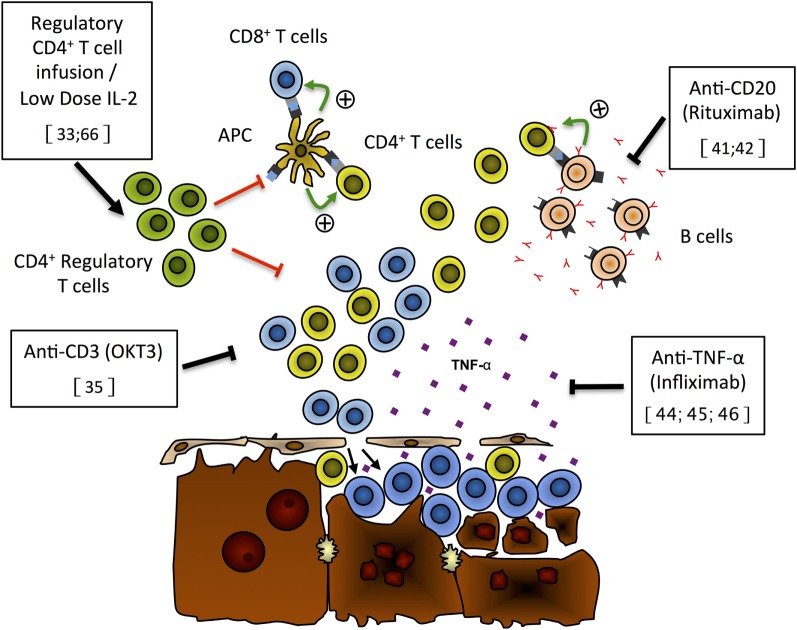Figure 1.
Putative mechanisms of liver damage and new immunotherapies for autoimmune hepatitis. On the basis of recently published data, we propose the following model for liver damage and mode of action of new immunotherapies that have shown effectiveness either in preclinical models or in preliminary patients’ reports. Expansion of the regulatory CD4+ T cell population (green), through Treg infusion or low-dose IL-2 treatment, can repress CD4+ (yellow) and CD8+ (blue) T cell activation and/or expansion and prevent hepatocyte lysis (33, 66). Anti-CD3 monoclonal antibodies (OKT3) can selectively deplete T cells and limit the destruction of hepatocytes (35). Selective B-cell depletion using anti-CD20 antibodies (rituximab) has the ability to prevent antigen presentation by autoreactive B cells (pink) to T cells, limiting the expansion of autoreactive T cells hence reducing hepatocyte lysis by these cells (41, 42). TNF-α blockade with monoclonal antibodies (infliximab) has been shown to reduce liver damage and induce remission of AIH (44–46).

